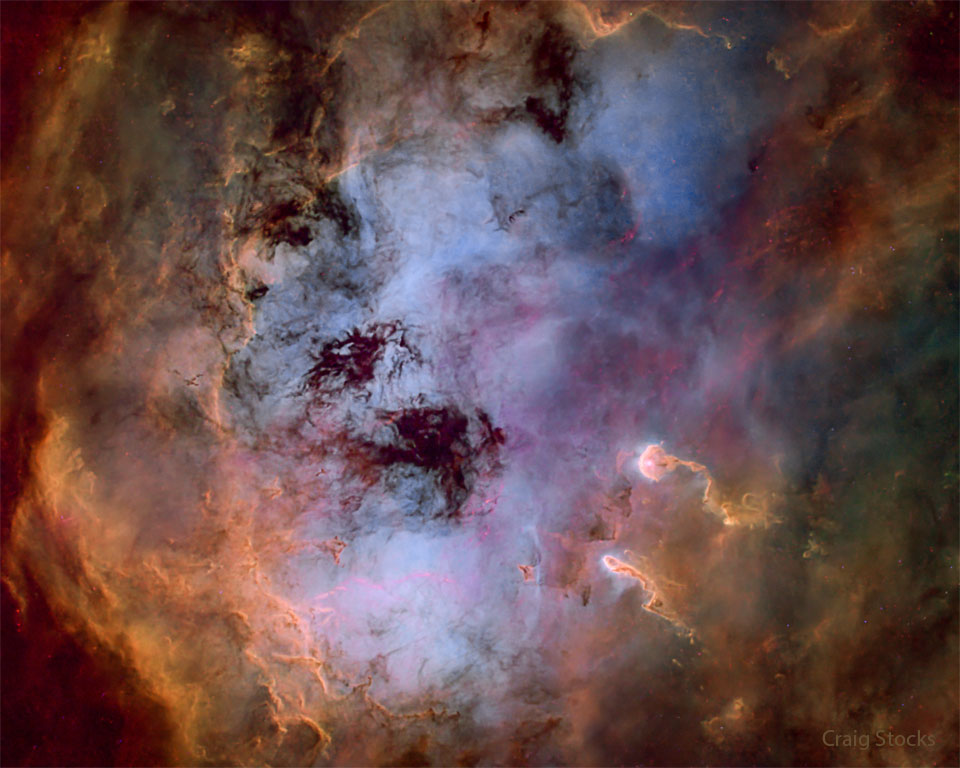2022年12月19日
The Tadpole Nebula in Gas and Dust
Image Credit & Copyright: Craig Stocks (Utah Desert Remote Observatories)
Explanation: What’s causing the commotion in the Tadpole Nebula? Star formation. Dusty emission in the Tadpole Nebula, IC 410, lies about 12,000 light-years away in the northern constellation of the Charioteer (Auriga). The cloud of glowing gas is over 100 light-years across, sculpted by stellar winds and radiation from embedded open star cluster NGC 1893. Formed in the interstellar cloud a mere 4 million years ago, bright newly formed cluster stars are seen all around the star-forming nebula. Notable on the lower-right of the featured image are two relatively dense streamers of material trailing away from the nebula’s central regions. Potentially sites of ongoing star formation in IC 410, these cosmic tadpole shapes are about 10 light-years long. The image was processed highlighting the emission from sulfur (red), hydrogen (green), and oxygen (blue) gas — but with the stars digitally removed.
Tomorrow’s picture: Big Thor
蝌蚪星云的气体和尘埃
图像提供与版权: Craig Stocks(Utah Desert Remote Observatories)
说明: 是什么造成了蝌蚪星云的骚动?有恒星形成活动。满是尘埃的蝌蚪星云IC 410,在北天的御夫座方向约12,000光年远处绽放光芒。这团直径超过100光年的明亮气体云,受到了内嵌的疏散星团NGC 1893之辐射及恒星风的雕塑。而刚在400万年前形成于星际云中的明亮星团成员星,则散在恒星形成星云各处。在这幅主题图像的右下角,值得特别注目的是从星云中心区泛流而出的2道相对致密之物质流。这些长约10光年的宇宙级蝌蚪状天体,可能是IC 410之内恒星正在形成的地点。这幅图像经过特殊处理并数位移除恒星,以突显来自硫(红)、氢(绿)和氧(蓝)(红色)、氢气(绿色)和氧气(蓝色)的辐射。
明日的图片: Big Thor



